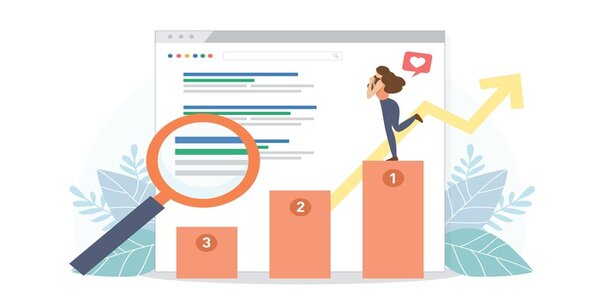Core Web Vitals: A Brief Guide

When it comes to gaining success through websites, getting them to rank high on the search engine is of utmost priority. Here you tend to adopt various SEO techniques to ensure that your website gains greater visibility compared to the other competitor websites. Have you ever thought about how you will analyze the functionalities and effectiveness of your website? Here comes the relevance of Core Web Vitals.
What are the Core Web Vitals?
Google Core Web Vitals launched by Google on 28th May 2020, is a set of factors to measure a website’s performance. The performance of a website is mainly done by identifying the loading performance of the site, responsiveness of the site, and visual stability of the site. The primary metric here is to find out how the user experience of a website is.
Core Web Vitals include three specific metrics to find out the user experience of a website;
- Largest Contentful Paint.
- First Input Delay
- Cumulative Layout Shift.
Google Core Web Vitals will help in measuring the score of your website, thus passing the verdict on its ranking on the search engine. When you enter your Google Search Console account, you will find the site’s CWV’s information under the “Enhancements” section.
Importance Of Core Web Vitals
Core web Vitals gained importance when Google decided to make the user experience an important factor to determine the rankings of a website. Following are the factors that will be a part of the user experience;
- HTTP.
- How mobile-friendly the website is.
- Presence of interstitial pop-ups.
- Safe provisions of browsing.
Now Core Web Vitals will make up for an important addition to these existing metrics to give the final verdict.
Now that you know its importance, let us discuss the three metrics that go into working with Google Core Web Updates.

1. Largest Contentful Paint
Largest Contentful Paint i.e. LCP helps in finding out the time taken in loading a website from a user’s point of view. In easier words, it resembles the time between clicking the website link till the complete content of the website becomes visible on the screen. LCP differs in its analysis from other measuring tools like First Contextual Paint and TTFB, by putting forward a user’s perspective in operating the site. These metrics are superficial ones compared to LCP as it concentrates on what matters; page viewing and interaction. Google PageSpeed insights help you get a look at your LCP score.
Work on raising the standards if you find a lower LCP score. The solutions listed below can help you get on the road to improvement;
- Removal Of Third-Party Scripts: Studies found that Third-party scripts can slow a website by 34ms. Imagine the consequence of having a bunch of them on your site.
- An Upgrade In Web Hosting: Ensure an upgrade in your web host that will boost the performance of your site by manifolds.
- Integrate Lazy Loading: Sometimes Images slow the speed of website loading. Here Lazy loading comes in handy as it allows the image to load when a visitor scrolls down.
- Remove Larger Elements: Larger elements in a site can slow down the process.
2. First Input Delay
The second Core Web Vitals is the First Input Delay. Your page might have solved the LCP issues but does that make the user interaction easier? Here FID appears as the solution that helps measure the time required for a customer to interact with your website.
Some options that make for the metric are;
- Opening the menu for choosing an option.
- Entering the email in the space provided.
- Clicking on the navigation links on your website.
- Using mobile devices to open Accordion text.
The importance of considering FID is that it measures the interaction of a real-time user with the website. Websites made of written content in totality won’t have FID problems; the metrics arise while scrolling down.
FID score goes a long way to determine whether an SEO technique is successful, provided you find the FID score to be low, adopt the following ideas;
- JavaScript Minimization: The presence of a large JavaScript defers user engagement with your website. How will a user interact with your site if it’s stuck in the loading stage?
- Removing Third-Party Scripts: Resembling the case in LCP, removing third-party scripts helps improve the FID score.
- Using Browser Cache: Browser cache speeds up the loading process.
3. Cumulative Layout Shift
Cumulative Layout Shift i.e. CLS measures the way your website looks on loading. A higher CLS is bad, where the elements keep moving on the website page. The need is to keep the elements stable while loading. Following are the things you can do for a better CLS score;
- Set a Particular Size For the Media: Keeping a fixed size for the images and videos does not allow them to move.
- Ads Having a Fixed Place: Ads should have a fixed place otherwise; they will pop up here and there.
- New UI Elements: New UI elements under the fold allow elements to stay in place.
Once you sort all these, your SEO technique will show the success on the measuring scale.




